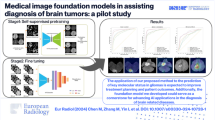Abstract
The brain seems to be the most complex organ in the human body and operates as the central part of the nervous system. The classification of brain tumors is the most complicated problem which medical experts face. In our proposed work, the novelty is that we have adopted the hybridization of feature exaction techniques and a conglomerate of classification methods. The hybrid features are extracted from the tumor region using the Gray Level Co-occurrence Matrix technique and shape-based features. There are three different types of brain magnetic resonance imaging datasets used in work. For the segmentation, the Marker-controlled watershed segmentation strategy is implemented in this work. In this work, the hybrid classifier, which includes the Random Forest (RF) classifier, K-Nearest Neighbour classifier, and Decision Tree classifier, is implemented. Dataset 1 (China Hospital data) shows a better overall accuracy of 98.75%; for dataset 2, accuracy is 98.99%; and for dataset 3, the achieved accuracy is 98.92%. The other parameters that prove the overall work's efficacy include sensitivity, precision, specificity, F1-score, Cohen’s kappa value, Dice coefficient, Jaccard Index, and area under the curve (AUC). The proposed work is also compared with the state-of-the-art methods and observed better one.


















Similar content being viewed by others
References
Abdallah MY, Alqahtani T (2019) Research in medical imaging using image processing techniques. Med Imag Princ Appl. https://doi.org/10.5772/intechopen.84360
Bahadure NB, Ray AK, Thethi HP (2017) Image analysis for MRI-based brain tumor detection and feature extraction using biologically inspired BWT and SVM. Int J Biomed Imaging 2017:1–12. https://doi.org/10.1155/2017/9749108
Lather M, Singh P (2020) Investigating brain tumor segmentation and detection techniques. Proc Comput Sci 167:121–130. https://doi.org/10.1016/j.procs.20.03.189
Amin J, Sharif M, Yasmin M, Lawrence Fernandes S (2020) A distinctive approach in brain tumor detection and classification using MRI. Pattern Recognit Lett 139:118–127
Ayadi W, Charfi I, Elhamzi W, Atri M (2020) Brain tumor classification based on hybrid approach. Vis Comput. https://doi.org/10.1007/s00371-020-02005-1
Kang J, Ullah Z, Gwak J (2021) MRI-based brain tumor classification using ensemble of deep features and machine learning classifiers. Sensors 21(6):1–21. https://doi.org/10.3390/s21062222
Cheng J (2017) Brain Tumor Dataset. https://doi.org/10.6084/m9.figshare.1512427.v5
Shahajad M, Gambhir D, Gandhi R (2021) Features extraction for the classification of brain tumor MRI images using support vector machine", International Conference on Cloud Computing, Data Science & Engineering, pp. 767–772
Ullah Z, Farooq M, Lee S, An D (2020) A hybrid image enhancement-based brain MRI images classification technique. Med Hypotheses 143:1–8. https://doi.org/10.1016/j.mehy.2020.109922
Sun J, Zhang H, Wang Y, Shi Z (2021) Dissipativity-based fault-tolerant control for stochastic switched systems with time-varying delay and uncertainties. IEEE Trans Cybern. https://doi.org/10.1109/TCYB.2021.3068631
Sun J, Zhang H, Wang Y, Shaoxin S (2021) Fault-tolerant control for stochastic switched IT2 fuzzy uncertain time-delayed nonlinear systems. IEEE Trans Cybern. https://doi.org/10.1109/tcyb.2020.2997348
Pratap A, Raja R, Cao J, Alzabut J, Huang C (2020) Finite-time synchronization criterion of graph theory perspective fractional-order coupled discontinuous neural networks. Adv Difference Equ. https://doi.org/10.1186/s13662-020-02551-x
Chen D, Zhang W, Cao J, Huang C (2020) Fixed time synchronization of delayed quaternion-valued memristor-based neural networks. Adv Difference Equ. https://doi.org/10.1186/s13662-020-02560-w
Chao S, Fei S, Cao J, Huang C (2019) Robust synchronization of fractional-order uncertain chaotic systems based on output feedback sliding mode control. Mathematics. https://doi.org/10.3390/math7070599
Xu C, Liao M, Li P, Xiao Q, Yuan S (2019) Control strategy for a fractional-order chaotic financial model. Complexity. https://doi.org/10.1155/2019/2989204
Tan W, Jiang FL, Huang C, Zhou L (2012) Synchronization for a class of fractional-order hyperchaotic system and its application. J Appl Math. https://doi.org/10.1155/2012/974639
Zhou Y, Wan X, Huang C, Yang X (2020) Finite-time stochastic synchronization of dynamic networks with nonlinear coupling strength via quantized intermittent control. Appl Math Comput. https://doi.org/10.1016/j.amc.2020.125157
Baygin M et al (2021) Automated ASD detection using hybrid deep lightweight features extracted from EEG signals. Comput Biol Med 134:1–12. https://doi.org/10.1016/j.compbiomed.2021.104548
Hamada A. Br35H brain tumor detection 2020 dataset. Available online: https://www.kaggle.com/ahmedhamada0/braintumor-detection
Kaleem M, Sanaullah M, Hussain MA, Jaffar MA, Choi T (2012) Segmentation of brain tumor tissue using marker-controlled watershed transform method. Commun Comput Inf Sci. https://doi.org/10.1007/978-3-642-28962-0_22
Hashemzehi R, Mahdavi S, Kheirabadi M, Kamel S (2020) Detection of brain tumors from MRI images base on deep learning using hybrid model CNN and NADE. Biocybern Biomed Eng 40(3):1225–1232. https://doi.org/10.1016/j.bbe.2020.06.001
Chakrabarty N. Brain MRI images for brain tumor detection dataset. Available online: https://www.kaggle.com/navoneel/brain-mri-images-for-brain-tumor-detection
Upadhyay A, Palival U, Jaiswal S (2020) Early brain tumor detection using random forest classification. Innov Bio-Inspir Comput Appl. https://doi.org/10.1007/978-3-030-49339-4_26
Subash N (2017) Certain investigation on brain tumor segmentation and classification on MR images [Master's thesis]. http://hdl.handle.net/10603/252198
Gharehchopogh FS, Khaze SR, Maleki I (2015) A new approach in bloggers classification with a hybrid of k-nearest neighbor and artificial neural network algorithms. Indian J Sci Technol 8(3):237
Ali N, Neagu D, Trundle P (2019) Evaluation of k-nearest neighbor classifier performance for heterogeneous data sets. SN Appl Sci. https://doi.org/10.1007/s42452-019-1356-9
Anithadevi D (2017) Detection and classification techniques of brain tumor in MRI images. Madurai Kamraj University
Patel BN (2012) Efficient classification of data using a decision tree. Bonfring Int J Data Min 2(1):06–12. https://doi.org/10.9756/bijdm.1098
Bhanothu Y, Kamalakannan A, Rajamanickam G (2020). Detection and classification of brain tumor in MRI images using deep convolutional network. 6th International Conference on Advanced Computing & Communication Systems (ICACCS). pp. 248–252, https://doi.org/10.1109/ICACCS48705.2020.9074375
Funding
This research did not receive any funding.
Author information
Authors and Affiliations
Corresponding author
Ethics declarations
Conflict of interest
The authors declare that they have no conflict of interest.
Additional information
Publisher's Note
Springer Nature remains neutral with regard to jurisdictional claims in published maps and institutional affiliations.
Rights and permissions
About this article
Cite this article
Bansal, T., Jindal, N. An improved hybrid classification of brain tumor MRI images based on conglomeration feature extraction techniques. Neural Comput & Applic 34, 9069–9086 (2022). https://doi.org/10.1007/s00521-022-06929-8
Received:
Accepted:
Published:
Issue Date:
DOI: https://doi.org/10.1007/s00521-022-06929-8




